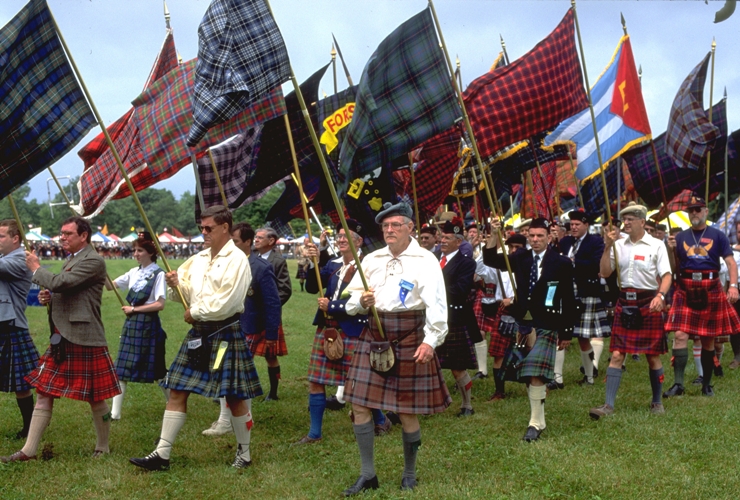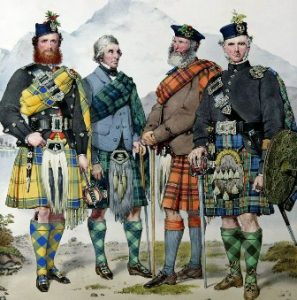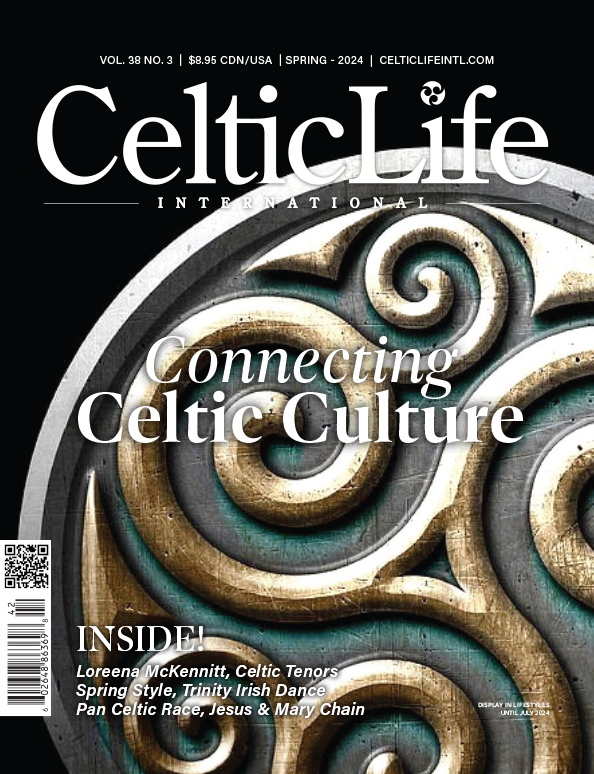
As most people know, “Mc” and “Mac” are prefixes that mean “son of.”
Early inconsistencies in records are what led to having both Mc and Mac prefixes. Mc is just an abbreviation of Mac, and both can actually be abbreviated further to the much less common M’.
As you might guess from this, the myth that a Mac name denotes Scottish heritage while a Mc name denotes Irish heritage is simply not true. Similarly, the assertion that Mac names are Protestant while Mc names are Catholic doesn’t have a shred of truth to it.
They both just mean “son of” and can be used by anyone of either descent or religion.
 Someone with the last name of MacDonald is sort of like someone with the last name of Johnson—likely, each had ancestors with the name of Donald or John. Back in the day, it was common to differentiate people with the same name by also calling them by the names of their fathers, which is how this sort of surname started to become popular.
Someone with the last name of MacDonald is sort of like someone with the last name of Johnson—likely, each had ancestors with the name of Donald or John. Back in the day, it was common to differentiate people with the same name by also calling them by the names of their fathers, which is how this sort of surname started to become popular.
You can probably see why Mc and Mac names typically contain a second capital letter.
Since proper nouns are capitalized, you would write “son of Donald,” not “son of donald.” In the same way, you would usually write MacDonald rather than Macdonald, but there are obviously exceptions. Surnames have been around so long that sometimes they get changed, and in some families, the second capital letter was gotten rid of.
In addition, some Mc and Mac names don’t include the name of the father, but the father’s profession. Take someone named John Macmaster. In this case, John’s father was a master of some sort, therefore John is the “son of a master.” Master is not a proper noun and thus does not need to be capitalized. This practice can be seen elsewhere—every Smith, Baker, and Cook likely had someone in that occupation somewhere in their ancestry.
Other Mc and Mac surnames come from some physical feature of the person, such as Macilbowie, which means “son of the blonde man,” while the more recognizable Mackenzie (ironically enough now a popular first name for girls) means “son of the fair one.” Again, every Brown, White, Green, Bruin, Weiss, LeBlanc, etc. can relate.
There was also a prefix for “daughter of” but these mostly fell out of favour years ago.
The daughter prefix was Nc, short for the Gaelic “nighean mhic.” Surnames for women like NcDonald were fairly popular in the 17th and 18th centuries, but after that time there were only a few secluded mentions of them.
 To a lesser extent, “Vc” was used to denote “grandson of,” so that a person would have two surnames. Now you might have John MacDonald Vcmaster, but this tradition was never incredibly popular and is not as prevalent today.
To a lesser extent, “Vc” was used to denote “grandson of,” so that a person would have two surnames. Now you might have John MacDonald Vcmaster, but this tradition was never incredibly popular and is not as prevalent today.
These surnames have gone through a lot of changes over the years. Aside from Mac being shortened to Mc, in some cases the prefix was dropped altogether. This happened as Macs and Mcs immigrated to other countries and other parts of their names were changed to be more easily pronounced by the people there. For instance, in several cases MacDonald became Donaldson. However, it also occurred within Scotland itself. For instance, the name MacGregor was once banned, and the members of the MacGregor clan had to use different names. Eventually, the name was reinstated, but not everyone went back to using it
Bonus Facts
In England, surnames started becoming standardized—that is, John Peterson would have a son named William Peterson, rather than William Johnson—around the reign of King Henry V. He decreed that surnames needed to be recorded, and it was getting confusing to have the several generations of the same family all with different last names.
Today, the most common surnames in Scotland are Smith and Brown, with the first Mac name—MacDonald—coming in at #11. In Ireland, the most popular surnames are Murphy and Kelly, with McKenna coming in at #14.
Last names were developed to differentiate between people with the same name as the population grew and parents’ creativity only went so far. That’s why so many surnames are descriptive—they tell you either what occupation someone is in, who their parents were, where their home is, or what they look like. This is true in many different languages and societies across the globe.
 Place surnames are some of the most common surnames, but they aren’t always as easy to figure out, unless your last name is something like London, Lake, or Newtown. That’s because some of the prefixes and suffixes attached to place names aren’t as well known today. For instance, “atte” meant “at the,” and has since been shortened to “at” in cases like Atwood or Atwater, which means the family likely lived near the woods or a river at some point. Some common suffixes are –ham, -stead, -stow, -ton, and –wick, which all mean something along the lines of “from the farm” or “from the town.” They might be paired with some old words for things that we no longer use, like “beck” for brook or “den” for valley. Combining a couple of those, you could get Beckham, which essentially means “from the farm with the brook running through it.”
Place surnames are some of the most common surnames, but they aren’t always as easy to figure out, unless your last name is something like London, Lake, or Newtown. That’s because some of the prefixes and suffixes attached to place names aren’t as well known today. For instance, “atte” meant “at the,” and has since been shortened to “at” in cases like Atwood or Atwater, which means the family likely lived near the woods or a river at some point. Some common suffixes are –ham, -stead, -stow, -ton, and –wick, which all mean something along the lines of “from the farm” or “from the town.” They might be paired with some old words for things that we no longer use, like “beck” for brook or “den” for valley. Combining a couple of those, you could get Beckham, which essentially means “from the farm with the brook running through it.”
Just as girls were given the Nc prefix now and then, girls were also given the surname “John’s daughter” in England. Obviously, this was not a lasting practice and is not nearly as popular as Johnson. Usually, the “daughter” portion was abbreviated to something like “daur” or “dr” to make it easier to spell and say.






















During my schooling in Scotland. We were taught that the difference between the two variants was, Mc, Irish. Mac, Scottish. Mc being pronounced Mick And Mac as Mac. Although they both relate to tbe same family it denotes the Irish side of it. We were told that it was to do with the reformation and the families who wished to remain Catholic emigrated to Ireland. Making them Scottish Irish.